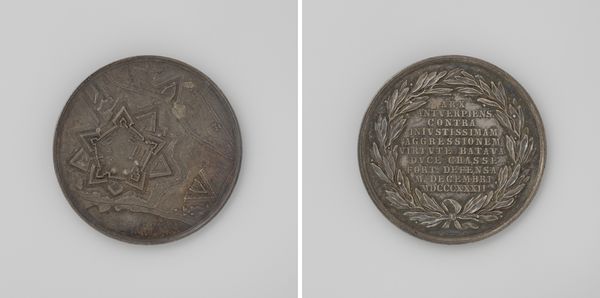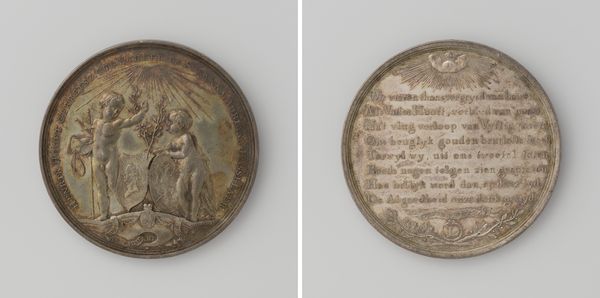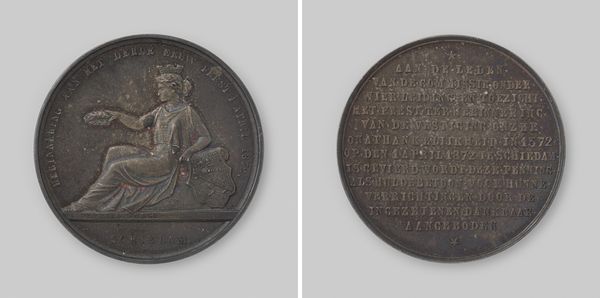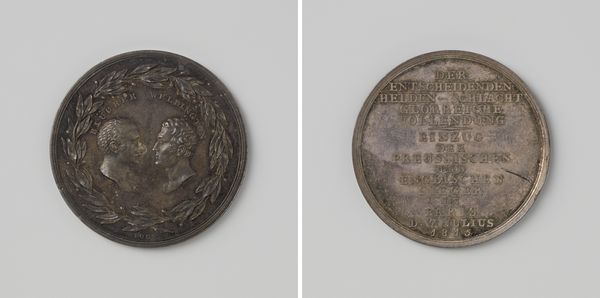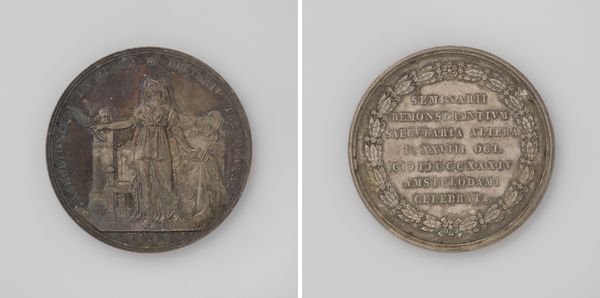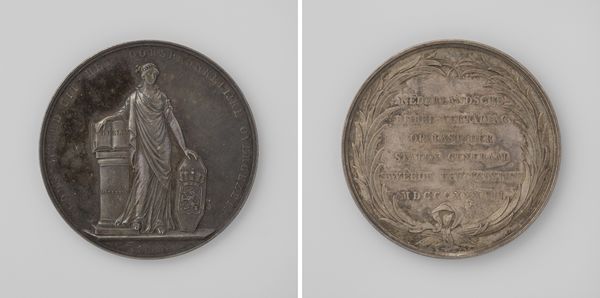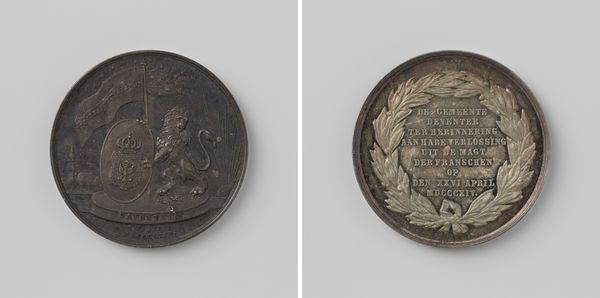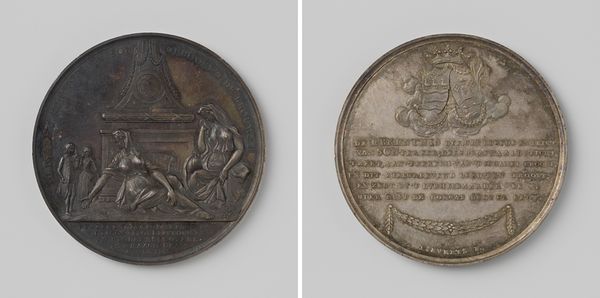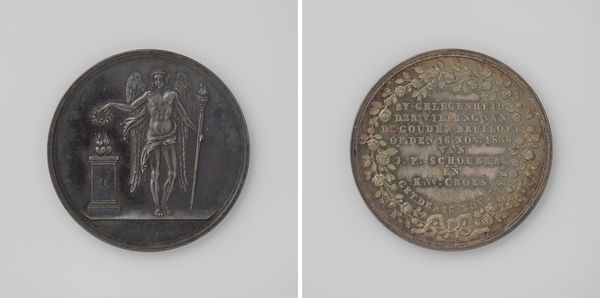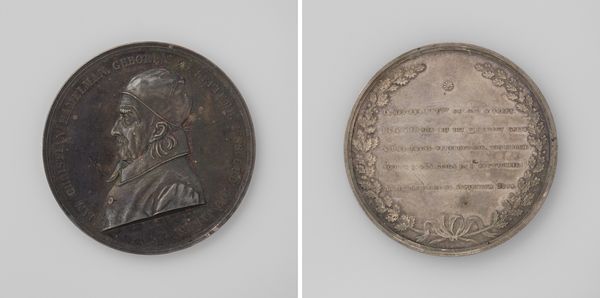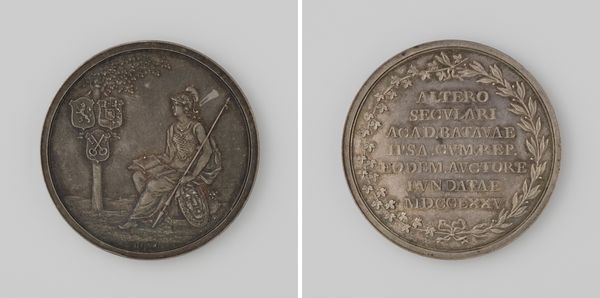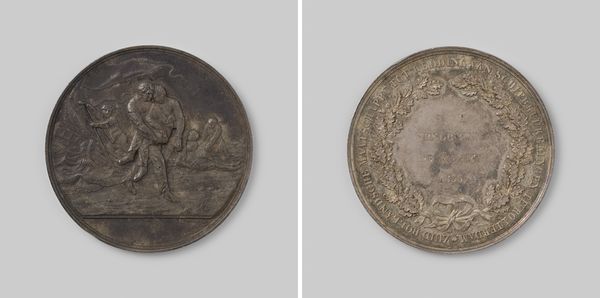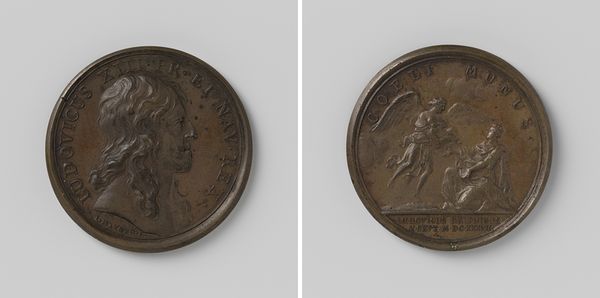
Tweehonderdvijftigjarig bestaan van de universiteit van Groningen 1864
0:00
0:00
davidvander18041879kellen
Rijksmuseum
Dimensions: diameter 5.1 cm, weight 41.13 gr
Copyright: Rijks Museum: Open Domain
Editor: This metal relief sculpture is titled "Tweehonderdvijftigjarig bestaan van de universiteit van Groningen," commemorating the 250th anniversary of the University of Groningen in 1864. It feels incredibly formal and... almost propagandistic. What kind of context am I missing here? Curator: Propagandistic is a loaded term, but it hints at the truth here. Commemorative medals like this were often commissioned by institutions to project an image of power, stability, and historical significance. Look closely. What visual cues speak to the University's identity and ambition? Editor: Well, on the one side, there are these two draped female figures, one seated and holding what looks like an architectural plan, and the other standing and pointing upwards. They seem like allegorical figures of some sort... maybe Wisdom and the Future? And the other side features Latin text surrounded by laurel wreaths. Curator: Precisely! The Neoclassical style evokes ancient Rome, linking the university to a long tradition of learning and civilization. The allegorical figures embody virtues and ideals. And consider who *received* this medal. It would circulate among academics and officials, reinforcing a sense of shared history and purpose. Editor: So, it’s not just a pretty object, but a tool for solidifying institutional identity and prestige? Were these medals common? Curator: Exactly. And yes, these were quite common, especially during periods of significant anniversaries or events. The medals would act as material expressions of power and continuity, distributed amongst the elite to reinforce a specific narrative. The Latin text reinforces that. Think about what other messages these medals conveyed about the university's place in society at that time. Editor: It really changes how I see the artwork – not as a simple representation, but as an active participant in shaping perceptions. Thanks, that's fascinating! Curator: Indeed. Considering art within its historical context can open up layers of meaning that are not immediately apparent, and shows us that art is always within a wider set of political and societal constructs.
Comments
No comments
Be the first to comment and join the conversation on the ultimate creative platform.
